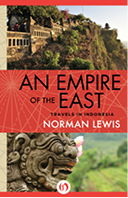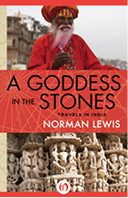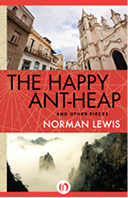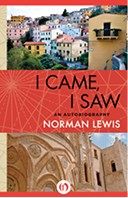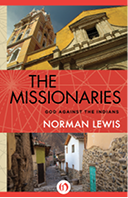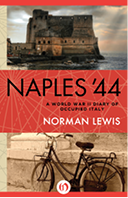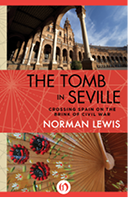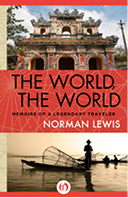To Run Across the Sea (30 page)
Read To Run Across the Sea Online
Authors: Norman Lewis

Further and more significant news was that missionary visas would not be renewed. As a newspaper put it, ‘the Army’s action has accelerated the campaign against the New Tribes Mission, and will serve in part to neutralise the pressure of the powerful interests that have supported it.’
Apart from the minor problems of organising a supply of missionised Ayoreos to perform what elsewhere might be described as slave labour, the NTM’s long and arduous involvement with the tribes in Paraguay was coming to an end. This was bound to leave ‘contact personnel’ with time on their hands, and the new generation of young evangelists, straight out of MK (missionary kids) schools with diminished opportunities for the expenditure of energy and zeal. Two prime targets for mass conversion had been under sporadic assault for a number of years and now once again occupied a prominent place in missionary reports. These were the Macu of Colombia and the Yuqui of Bolivia.
It was to the Macu’s advantage, after their discovery deep in the jungles in 1971 by a missionary spotter plane, that their tribal homeland should have been regarded as guerrilla territory. This deterred attempted contact for a while, and when an advance party moved in and cut an airstrip this was put out of action by the guerrillas who placed oil drums on it to prevent planes from landing. The Macu were handicapped in their encounters with persistent evangelists by the fact that although this area abounded with rivers they could neither swim nor handle a boat. When, therefore, the Macu made it clear that the missionaries’ presence was unwelcome by using their blowguns to shoot darts at them, the newcomers took refuge on an island in a lake, and there established their base.
Years passed. The missionaries sat on their island and the Macu watched them mistrustfully from the other bank. Once, when the missionaries crossed over in their boat, they came under attack and one of them was struck in the neck by what was called a poisoned dart, although without ill effect. Some reference to a missionary shotgun was allowed to slip out at this point; the Macu fled and stayed away for three months. In 1978 another evangelist was slightly wounded. Significantly,
Brown Gold
records that this ‘was the first time we had known the Macus to attack with no obvious provocation’.
By 1981 some ground had been gained. Until this time the missionaries had been unable to learn the language. ‘Months went by and we could hear the Indians shouting, but never saw them.’ Now it was decided to shower them with gifts and, paddling softly across the lake, machetes were left along the trails. This seems to have done the trick. The Macu invited them to their village, providing an opportunity to conceal a microphone in the roof of one of the huts by which the language was recorded. A return occasion was even more successful. The evangelists cooked popcorn in a pan for their visitors; a drawing of this episode shows the Macu warriors encircling the pan, spears raised to defend themselves if necessary, in the face of this new evidence of the white man’s magic powers.
This was the instant when their fate hung in the balance. It was the equivalent of the moment in the bull-ring when the torero stands before the weakened but still belligerent bull and slowly draws the sword from the
muleta
in which it has been concealed. The Indians should have thrown their spears and run. Instead they stayed and they and the missionaries shared the popcorn, and the bond of a disastrous friendship was thus sealed. Those who come first to such meetings become almost certainly the first to accept conversion, and next they are skilfully detached from their backward and conservative friends wishing to continue in their old ways. It is the eventual fate of these to suffer isolation, then expulsion from the community, then extinction. This tactic has not changed since the London Missionary Society used it to conquer the Pacific in a single decade.
In 1986 the guerrillas withdrew and the missionaries were at last able to use their airstrip and bring in reinforcements. ‘Two previous flights had found the airstrip covered with 55-gallon barrels…. With a Vietnam-style landing the helicopter arrives.’ The Macu gardens are located nine hour’s walk away, and here the Macu are the missionaries’ old friends from the popcorn days, now become allies in the fight against their unsaved fellow tribespeople. ‘The most savage, naked people in the world are hugging, embracing and dancing for joy. Their friends are back … ’
A year later, the NTM is well dug in, with total victory in sight. ‘Forty other [unconverted] Macu arrived who were from far away … This situation was touchy for a while, and still is. The rest of our group is to arrive soon, and there’s going to be a big confrontation between the two groups, involving about one hundred Macu.’ Remembering the Ayoreos we should all know what comes next.
The fate of the last of the Yuqui has been, if possible, more unkind. In 1964 an NTM contact team took a party by surprise in the corner of a jungle in Central Bolivia, carrying off 25 of them to their camp. Thereafter, contact work lapsed. Further advances into Yuqui territory met with stiff resistance as exemplified by the adventures of Bruce Porterfield, a missionary with combat experience in World War II, who wrote a missionary classic,
Commandos For Christ
, saturated with the spirit of military adventure.
To prepare him for such jungle encounters, Porterfield was sent to a mission ‘boot camp’, where the training by Army NCOs simulated as closely as possible the stresses evangelists might encounter among hostile Indians and ‘hence toughen them up as “commandos” for the Christian battlefield’. In the boot camp they taught him to make a strong house ‘with two rows of flattened gasoline drums … nailed against the outside, making a crude wall of armour plate about seven feet high’.
This is what Porterfield built in Yuqui country and into it he and the other members of the team withdrew with their Bibles, their shotgun and a .22 pistol to withstand a long and unproductive siege.
The Indians, hidden in the jungle, whistled at them and they whistled back, and this was the only form of communication. In the short interludes of peace they stole out to lay gifts, as instructed, along the Indian trails. The stratagem in this environment was ill-advised. White farmers of the poorest and most degenerate type, whose habit it was to shoot Yuquis on sight and carry off their children to be sold as slaves, scratched a living in the vicinity. These added their own contributions of sugar mixed with arsenic to the missionaries’ gifts. One of the evangelists, straying too far from the strong house, was shot to death with arrows.
There was nothing to be done here except cower behind armour-plated walls and wait. In between evangelising bursts it was normal for missionaries elsewhere to augment mission funds by engaging in the trade of such things as jaguar skins and Indian artefacts, but here inactivity was absolute. Quietly, the curtain came down, and the contact that never was came to an end.
Then in the early eighties, valuable stands of timber were discovered in Yuqui territory and the logging companies moved in. Most of these were there illegally. They employed clandestine
espontáneos
to fell the trees, providing the finances and the equipment for their operations, and even building the roads. When—as they were bound to do—the loggers ran into trouble with the Yuqui whose livelihood they were destroying, they turned to the NTM for help. By 1984 the missionaries were back in full force, cutting an airstrip in the heart of Indian country.
The new missionary team took with them several of the now tame Yuqui from the original contact in 1964, from whom they had picked up a few words of the language. Even so, the expedition was a failure. ‘We called out friendly phrases and prayed as those we sought fled into the jungle.’ Although twenty-eight Yuqui had been seen, it was not possible to ‘bring them in’. A further three years passed before partial success could be announced with the arrival of twenty-two Indians at the NTM camp at Chimoré. ‘In the quest to bring these wild Yuqui under the sound of the Gospel, three missionaries and three of their Indian helpers have been wounded, shot with eight-foot arrows by those they thought to befriend,’ said
Brown Gold
. The fate of the Yuqui bowmen who engaged them can only be guessed.
Nevertheless, the number of free Yuquis dwindled constantly, and by the summer of 1988, the end was very close. Now only one major group, the Arroyote Yuqui, remained at liberty. In response to an appeal by a logging company, ‘Larry got his team together and headed for the woods.’ Once again the outcome was unsatisfactory. The Yuquis’ ‘treacherous behaviour was in full display’, arrows flew in all directions, two of the team were wounded and the retreat was sounded. Twice again the loggers called in the missionaries by which time it was clear that the treacherous Yuquis were close to the end of their tether. However, the shadow of the future falls across Larry Depue as he writes: ‘Since that time (the last encounter) Satan has done all he can to see the New Tribes Mission expelled from the country. Accusations were rampant and rumours spread like wildfire.’
In February 1988 the Bolivian newspaper
Presencia
reported that an ‘evangelical sect’ had used a clandestine plane to remove 200 Yuquis to its camp. Half this group, it said, had disappeared. It published the statement of the Pro-Vida Committee organised by the Bishop of Santa Cruz in which the bishop expressed alarm at the operations of the North American organisation in the zone. The statement deplored the unexplained deaths of nine Yuqui Indians and continued: ‘The New Tribes Mission has given assurances to the Attorney-General of the State of Santa Cruz to cease the transfer of Yuquis to its camp at Chamoré.’
This it might well have done. The most recent estimate put the number of those remaining at large as 75, divided into three small bands, about half of them being women and children.
Presencia
informed that Yuqui bows and arrows, from which the owners traditionally refuse to be parted in their lifetime, were on sale in the market of Santa Cruz, being, on account of their rarity and the beauty of the feathering, in great demand by connoisseurs of such things.
On 8 December 1988, in his message for the World Day of Peace the Pope stressed the right of all religious minorities to worship according to their own rites. This freedom has been violently opposed by the NTM, with irreversible damage to the tribal peoples with which it has come in contact. Now that the tide has turned against it in Latin America, with expulsions to be expected, it is surely unacceptable that the sect’s principal training-ground outside the US should continue to exist on British soil.
Norman Lewis (1908–2003) was one of the greatest English-language travel writers. He was the author of thirteen novels and fourteen works of nonfiction, including
Naples ’44
,
The Tomb in Seville
, and
Voices of the Old Sea
. Lewis served in the Allied occupation of Italy during World War II, and reported from Mafia-ruled Sicily and Vietnam under French-colonial rule, among other locations. Born in England, he traveled extensively, living in places including London, Wales, Nicaragua, a Spanish fishing village, and the countryside near Rome.
All rights reserved under International and Pan-American Copyright Conventions. By payment of the required fees, you have been granted the non-exclusive, non-transferable right to access and read the text of this ebook onscreen. No part of this text may be reproduced, transmitted, downloaded, decompiled, reverse engineered, or stored in or introduced into any information storage and retrieval system, in any form or by any means, whether electronic or mechanical, now known or hereinafter invented, without the express written permission of the publisher.
Some of the essays in this collection have previously appeared in the following publications: the
Sunday Times
Magazine; the
Independent
Magazine; the
Observer
Magazine;
Granta
;
Departures
;
Time Out
;
Marie Claire
;
Harpers & Queen
;
Traveler
Copyright © 1989 by Norman Lewis
Cover design by Kelly Parr
978-1-4804-3336-6
This edition published in 2013 by Open Road Integrated Media
345 Hudson Street
New York, NY 10014

